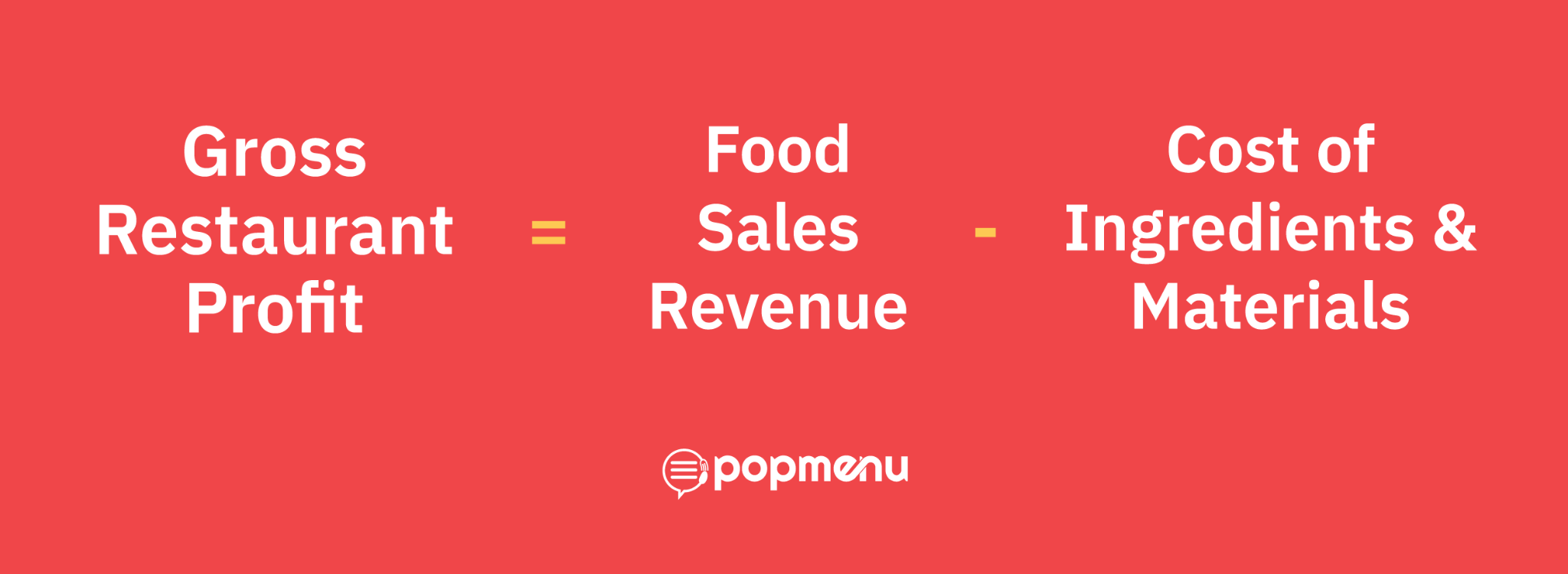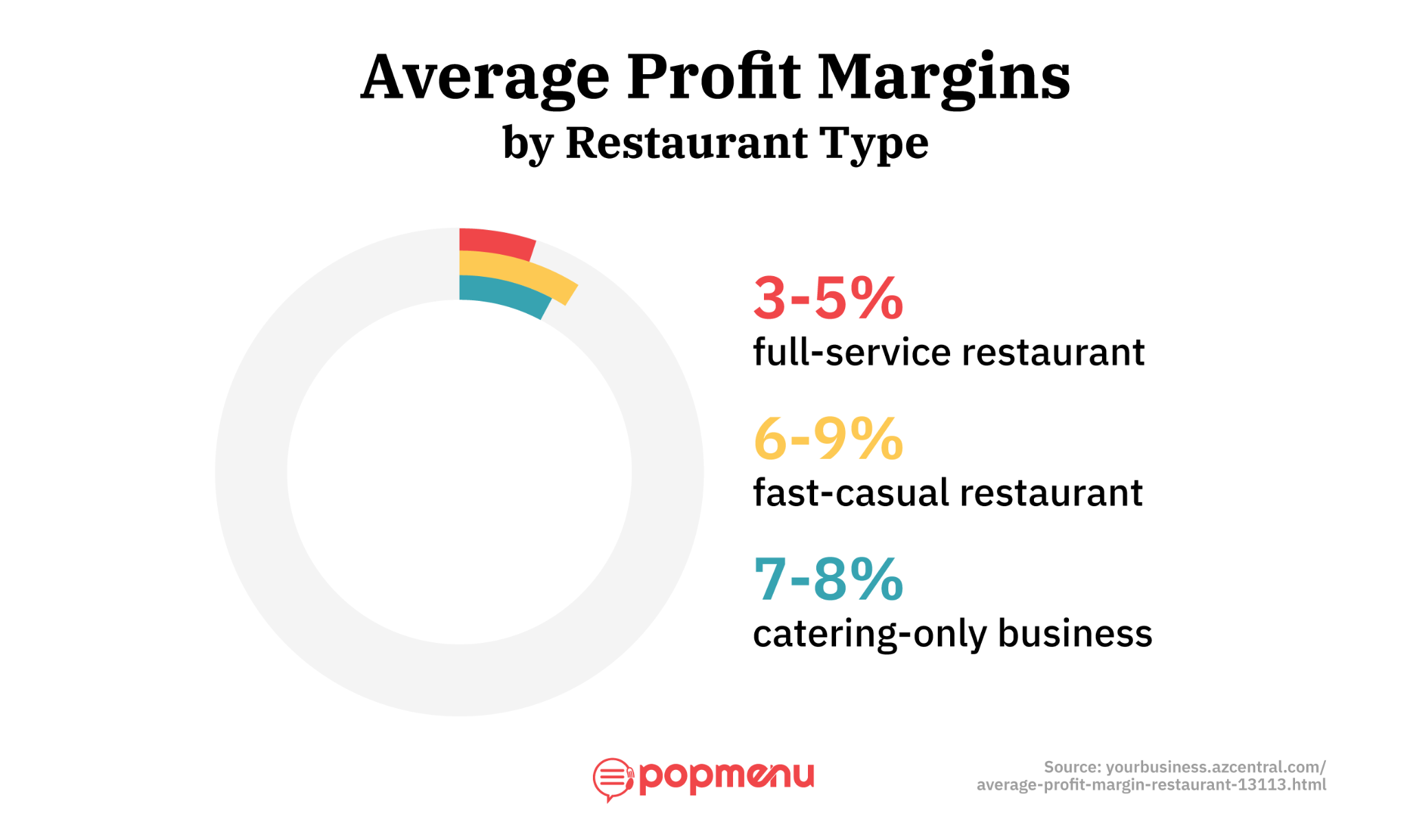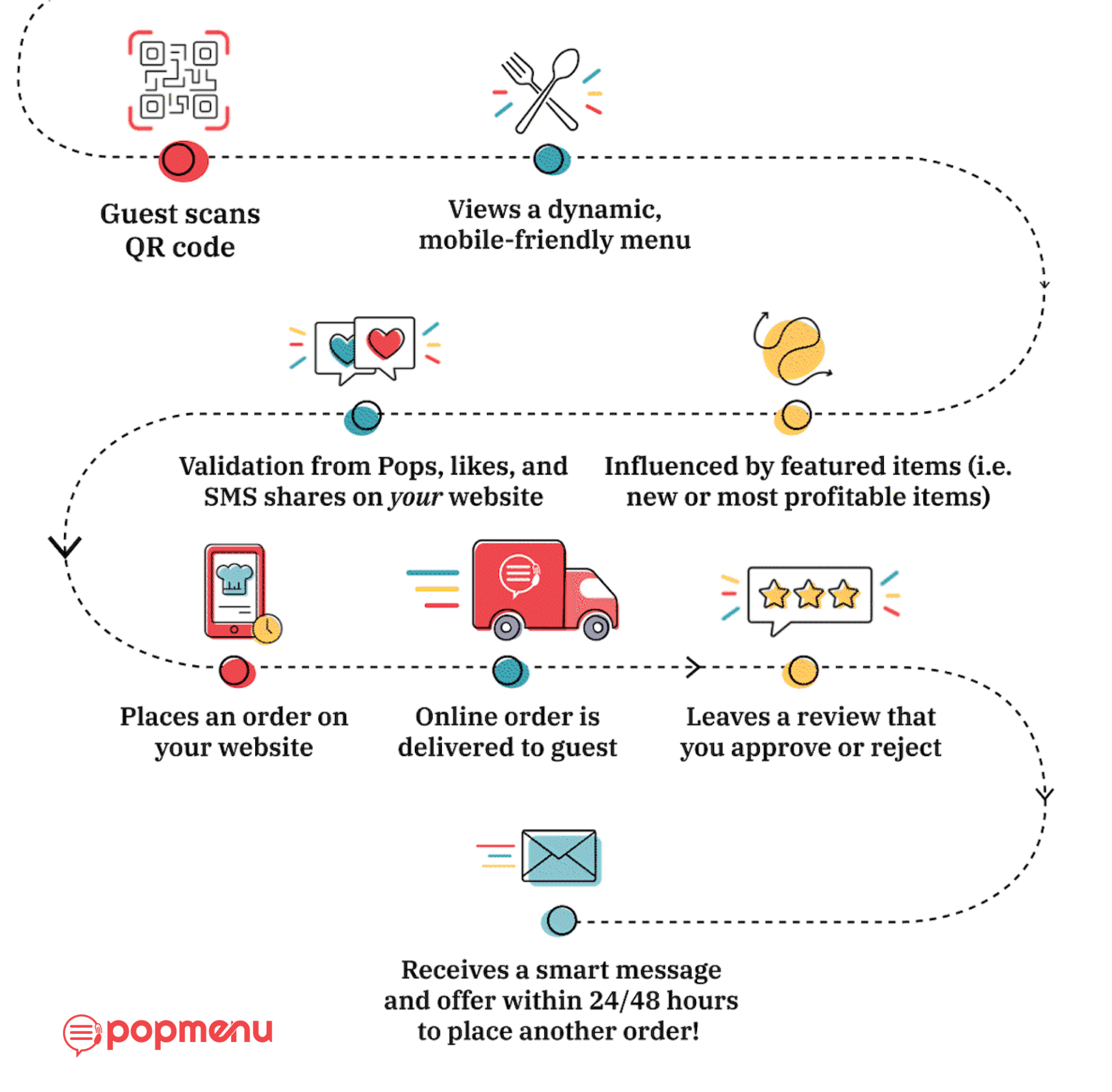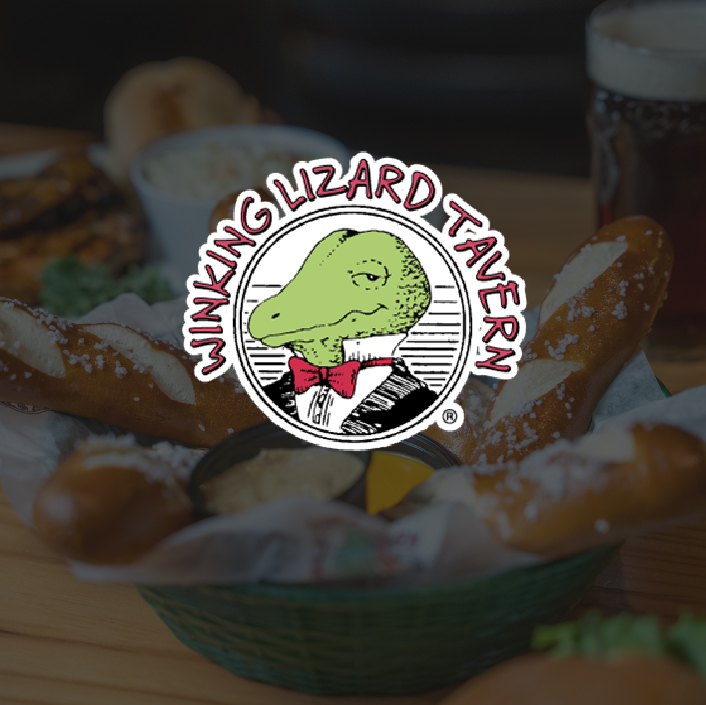
How technology can help boost restaurant profit margins

Anyone who’s worked in the restaurant industry knows that restaurant profit margins tend to be slim.
But the idea that restaurants have to operate on shoestring budgets is a myth. Sure, it will take a lot of hard work, ample dedication, and careful planning, but with the right skills and tactics, you can boost your restaurant profit margin and turn all that hard work into financial gain.
How do you calculate your restaurant’s profit margin? What’s the average profit margin for a restaurant—and why do they tend to be so low? And, most importantly, what are some of the simplest ways restaurants can cut costs, increase revenue, and boost their bottom line? Read on to learn more.
What Is a Restaurant Profit Margin?
Your restaurant’s profit margin is the amount of profit you generate annually, expressed as a percentage of your yearly sales.
Profit is money that’s left over after you subtract operating costs, food costs, and wages. It may come from more than just food sales—for example, restaurants can profit from catering, venue rentals, branded merchandise, franchising, and packaged goods, to name a few examples.
Similarly, a restaurant may have a wide variety of expenses that need to be subtracted from its total revenue before calculating its profit margin: inventory, payroll, rent, utilities, marketing costs, credit card processing fees, repairs and maintenance, and technology used to run the restaurant, for example.
To calculate your profit margin, you’ll first need a few other numbers.
Calculate Your Restaurant’s Gross Profit
Your restaurant’s gross profit is the difference between your sales revenue and the cost of the ingredients and materials used to make the dishes you sell (otherwise known as cost of goods sold, or COGS).
To calculate your restaurant’s gross profit, you’ll need to add up all your food sales revenue over a period of time. Then, add up the cost of all the ingredients and materials used in the same time period, and subtract that from revenue.
For example, let’s say you own a casual taco restaurant that did $2.5 million in sales last year. The total cost of goods sold (COGS) was $750,000. That means your gross profit for the year was $2.5 million minus $750,000, or $1.75 million.

Gross profit doesn’t tell you about your restaurant’s overall profit margin—but it can be an extremely helpful figure to know when looking for ways to increase your profit margin. If your gross profit margin is very low, it can indicate that your menu items are priced too low for the cost of their ingredients, or that you’re wasting a lot of inventory.
Calculate Your Restaurant’s Net Profit
Net profit is what most restaurateurs are thinking of when they consider their profit margins. Net profit is what’s leftover from your gross profit after you subtract all your operating costs, including payroll, rent, utilities, maintenance, equipment, technology, and any other expenses your restaurant incurs. But it also includes any revenue your restaurant makes outside of food sales.
To calculate net profit, first you’ll need to decide on a time period for which you want to know your profit margins. Then, you need:
- Your restaurant’s total sales over that time period.
- Any other revenue your restaurant made during the same time.
- Cost of goods sold (COGS) for that time period.
- All operating expenses.
- Any losses during that time.
Add up total sales and other revenue. Then, add up your COGS, operating expenses, and losses, and deduct them from the total revenue you calculated. This is your net profit.
Let’s circle back to the casual taco spot from the last example. Say that last year, you had:
- $2.5 million in sales.
- $50,000 in franchise fees.
And:
- $750,000 in COGS.
- $1.5 million in operating expenses.
That means total revenue was $2,550,000. And total costs were $2,250,000. So net profit was $2,550,000 minus $2,250,000, or $300,000.

How to Calculate Your Restaurant’s Profit Margin
Profit margins are expressed as an annual percentage of your restaurant’s revenue.
That means, using the examples above, you would calculate your taco restaurant’s profit margins like this:
- Gross profit = $1.75 million, out of $2.5 million in sales = 70% gross profit margin.
- Net profit = $300,000 out of $2.55 million in revenue = 11.8% net profit margin.

What Is the Average Restaurant Profit Margin?
You might be looking at that taco spot’s 11.8% net profit margin and wishing yours was that high. That’s a little bit higher than the average restaurant profit margin, which has been shrinking over time.
Let’s take the famously foodie city of Philadelphia, for example. 20 years ago, profit margins for restaurants in Philly averaged 15-20%. But today, that average has shrunk to 4-7%, which is on par with the national average restaurant profit margins.

Of course, profit margins can vary greatly, depending on the type of restaurant you operate, where it’s located, and many other factors. Average profit margins for different, common types of restaurants tend to be around:
- 3-5% for a full-service restaurant.
- 6-9% for a fast-casual restaurant.
- 7-8% for a catering-only business.
Why Are Restaurant Profit Margins So Low?
There are a lot of factors to consider here. The three major categories of expenses (often referred to as the “Big Three” in the restaurant industry) provide some clues. Those are:
- Cost of goods sold (COGS);
- Labor;
- Overhead.
As a general rule, restaurateurs are encouraged to strive for a cost breakdown that allocates one-third of their revenue to COGS, and another third to labor. That leaves just one-third of all revenue to cover overhead (like rent, utilities, maintenance, and equipment) and produce profit.

A breakdown like this shows why it can be difficult to increase your restaurant’s profit margins—even if you increase revenue, your COGS and labor expenses may increase. This leaves most restaurants with profit margins hovering around 2-6% on average.
12 Ways to Boost Restaurant Profit Margins
While average profit margins for U.S. restaurants do tend to be low, there are ways to increase them. To boost your restaurant’s profit margins, you’ll need to increase your revenue, lower costs, or both.
Increase Revenue
There are a number of tactics restaurants can employ to help increase their revenue.
Have a restaurant website.
A good website, which should include your menu and basic information like location, phone number, and operating hours, can help boost revenue simply by helping hungry guests find you. Studies have shown that the majority of guests check online menus before visiting a new restaurant, and that they’re more likely to choose a restaurant with a good web presence over one without.
Offer online ordering.
Restaurant online ordering was already steadily rising in popularity, but the COVID-19 pandemic caused that trajectory to soar. A recent study showed that digital ordering is currently growing 300% faster than dine-in traffic. Adding online ordering for your restaurant is a great way to boost revenue, since it isn’t limited by how many guests you can fit on your floor.
Optimize your menu.
Using menu engineering, restaurants can hack their menus to promote their most profitable dishes, increase sales of high-margin items, and more.
Market your restaurant.
When you want to make more sales, one key may be marketing. And in the digital age, restaurants have a lot of options for spreading the word about their offerings. Social media, paid search, a restaurant newsletter, and traditional advertising are all ways restaurant marketing can help increase sales.
Encourage repeat visits.
One way to market your restaurant is by trying to bring back existing guests, rather than solely attract new ones. Consider offering a loyalty program or discounts for repeat customers. After all, research shows that it’s more cost-effective to keep loyal guests than to pay for marketing that brings in new ones.
Train staff in sales.
When it comes to increasing sales, your staff may be an underutilized secret weapon. By dedicating some time to teaching them how to upsell guests with specials, recommendations, and other simple tactics, you can quickly and easily start increasing check sizes.
Increase table turnover.
And then there are the old-fashioned ways to boost restaurant revenue. One tactic is by trying to increase table turnover, meaning guests spend less time eating and you can seat more tables over the course of an entire service. Serving menu items that are quick to prepare is one great way to do this.
Add more seating.
You can also serve more guests by simply adding more seating. If your dining room is at full capacity, consider whether you have the space to add some outdoor seating (a very popular option in the age of the pandemic).
Decrease Costs
Alternatively, you can increase your restaurant’s profit margin by lowering costs. Here are some ways to do that.
Reduce your COGS.
There are many potential ways to reduce your cost of goods sold: Shop around to different vendors to get a better deal, buy ingredients in bulk to reduce the cost, or focus on menu items that are cheaper to make, just to name a few.
Reduce labor costs.
Reducing labor costs can be tricky. After all, any restaurant knows that its staff is its best asset. But smart staffing is becoming more popular and common in the restaurant industry. This means looking for trends in traffic to your restaurant, and staffing according to how many people you need on shift for both busy and slow periods.
Take advantage of AI
Artificial intelligence (AI) is a low cost, high impact way to make your restaurant more efficient. From automated phone answering to marketing content generation, there are a number of ways restaurants are using AI to improve their margins.
Reduce waste.
Current estimates say that food waste in restaurants costs the industry $25 billion per year. A simple way to reduce your restaurant’s costs is to reduce waste through practices like better inventory management.
Reduce employee turnover.
And finally, another way to reduce labor costs in your restaurant is by reducing staff turnover. The Center for Hospitality Research at Cornell estimates that from recruiting to orientation and training to lost productivity, it costs the average restaurant $5,864 to replace a single staff member. Offer your employees competitive wages, benefits if you can, and make your restaurant a great place to work, so they’re encouraged to stay.
Invest in Technology—Even When Profits Are Down
One seemingly counterintuitive way to boost your restaurant profit margins is by investing in technology—even when profits are down.
The right restaurant technology tools can both increase revenue and reduce costs. Consider a platform like Popmenu as an example.

As an all-in-one digital toolkit for restaurants, Popmenu can help you boost revenue through:
- Building and managing a website;
- Engineering an interactive online menu;
- Offering direct online orders;
- Automating digital marketing tasks.
And Popmenu can also help reduce costs, because you get all those tools in one platform that has a single, low monthly fee that never goes up. Investing in technology tools to do all those different jobs can quickly add up for restaurants, but Popmenu makes it simple and affordable to access all the modern tools restaurants need to succeed in a digital world.
Want to see for yourself? Schedule a free demo today.
Keep Tracking Restaurant Profit Margins Over Time
One key to increasing restaurant profit margins is to keep tracking them over time, looking for indicators that they’re rising, as well as new opportunities to increase revenue or lower costs.
By continuously monitoring your profit margins and making it a priority to look for ways to increase them, you give your restaurant a far better chance of pushing profits into the margins you—and your staff—deserve.





.jpeg)






